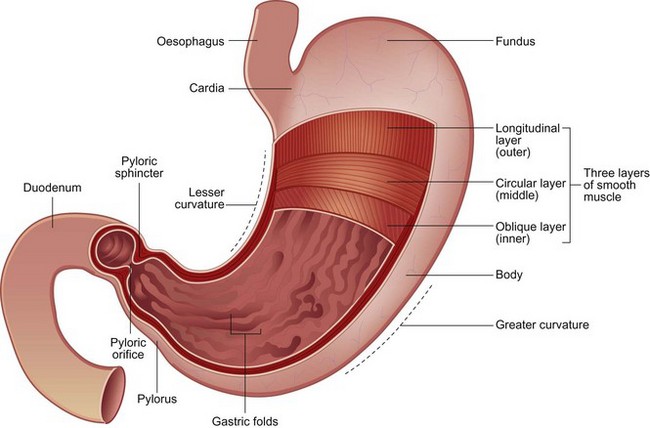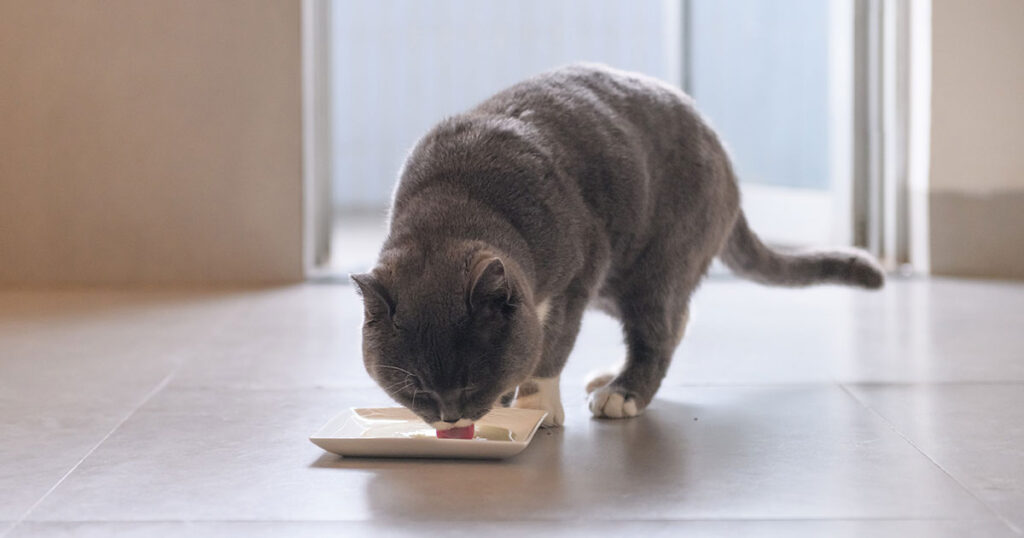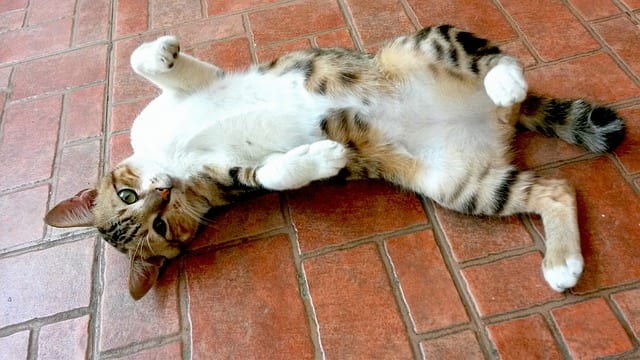Knowing how much food to offer your cat is like hitting a jackpot. Sometimes, it seems as though you have offered too little food. Other times, you wonder whether he’s had enough. To know the exact amount of food to give your kitty, you have to go back to the basics. You got to understand how much food his little tummy can hold in the first place. Once you have that information, you can get a rough idea of what ‘just enough’ food means to him. Follow us as we explore the topic plus a bunch of other related questions about a cat’s stomach.
The Anatomy of the Feline Stomach

Source: Veteriankey
Like in all creatures, a kitty’s stomach is responsible for storing, mixing, digesting, and emptying food to be digested further in the small intestine. It contains glands that produce enzymes and acid to break down incoming food, kill bacteria in the gut, and secret protective mucus for the stomach lining.
A cat’s stomach is shaped like a kidney bean. The longer outside margin is located on the left side also called the great curvature. The shorter outside margin is on the right and is referred to as the lesser curvature. As for the number of sections, the gut has several of them. As soon as the cat chomps on a piece of meat, the esophagus propels it down to the gut. At the junction between the stomach and the esophagus, you have the fundus or the base of the gut.
Next is cardia, the opening to the stomach where food enters the stomach. The largest section is the actual stomach whose function is to store undigested food. The next section is the antrum, a muscular part that grinds up food into smaller particles. Lastly, you have the pylorus, another ring of muscle that regulates the flow of food to the duodenum (beginning section of the small intestine).
How Big Is It?
According to Doc and Phoebe’s Cat Co., a cat’s stomach is the size of a ping pong ball. The international tennis rules specify that a ping pong ball has to be 40 mm (1.57 inches) in diameter. Experts say that the tummy can only handle 1-2 teaspoons of food at a time. Because of this, cats should eat small portions throughout the entire day rather than having one or two larger meals.
If you own a toy dog and a slightly bigger cat, you might have noticed that the doggie can handle more food at a go. When the kitty tries to eat as much as the dog does, he will end up vomiting most of it. It all comes down to the super tiny size of the kitty’s belly. For this reason, a feline needs to eat small portions of food throughout the day.
Related Questions

How many ounces can a cat’s stomach hold?
1 ounces (1-2 tablespoons)
Do cats have two stomachs?
No. They only have one simple stomach which forms the largest part of the gut.
How many times a day should you feed your cat?
There is no one-size-fits-all answer to this one. Different kitties have different nutritional requirements. For example, if you own a kitten and an adult cat, both will have different needs. Weight is also an issue. Cats that are not in their ideal body weights need adjustment as far as diet is concerned while obese cats need fewer calories in a day.
Similarly, a playful and active cat needs more calories than a laid-back and lazy one.
Check feeding recommendations on his packages and determine how much to feed him. Also, calculate his calorie requirements and decide how frequently you want to give the food knowing how much his stomach can hold.
Once you know the calories, divide the number by the size of his stomach and you will have the number of times to feed him. You might have to resort to trial and error for a while before you arrive at the right portions and frequency for the cat. Ideally, if no food is left behind and there are no signs of hunger, you should be okay. Finally, watch out for weight gain/loss and adjust accordingly.
How much food should a 10-pound cat eat per day?
Approximately 240 calories. However, the exact number depends on the ideal weight of the cat, age, and activity levels. For example, a 10-pound nursing cat needs more calories than a 10-pound male cat with no nursing responsibilities. Similarly, a 10-pound overweight cat needs 240 calories per day while a 10-pound nursing mother needs 603 calories per day.
How long does food stay in a cat’s stomach?
About 8-10 hours. Felines have smaller bodies and even smaller and simpler stomachs. As a result, it takes longer for them to digest food compared to other animals. After about 10 hours, all the food will have been moved to the small intestine. The stomach will then send signals to the brain which will consequently stimulate a hunger response. Two meals per day will take prevent your cat from feeling hungry. In addition, be sure to keep a solid feeding routine to allow your kitty’s system to prepare for food.
Final Thoughts
Am I overfeeding my cat? Am I underfeeding him? These are some of the questions cat owners grapple with on a daily basis. From the information above, it is clear that a kitty has a tiny stomach that can only handle 1-2 tablespoons of food at a time. This is an incredibly small portion. This means that if you own a cat at home, you are better off giving him frequent meals throughout the day rather than one big meal.
Related Post: 18 Cat Claws Anatomy Facts for Beginners

Hi! I am Eleanor Price. I started this website after my cat, Louie, almost died from a case of botulism (a type of food poisoning often caused by bacteria that grow on food items). Turned out that my cat’s diet was the problem. I have made it my duty to provide the best information and recommendations about everything cat lovers need to know about their felines’ health and wellbeing. My goal is to find the most informative content on anything feline-related and share it with fellow hardworking kitty lovers.

